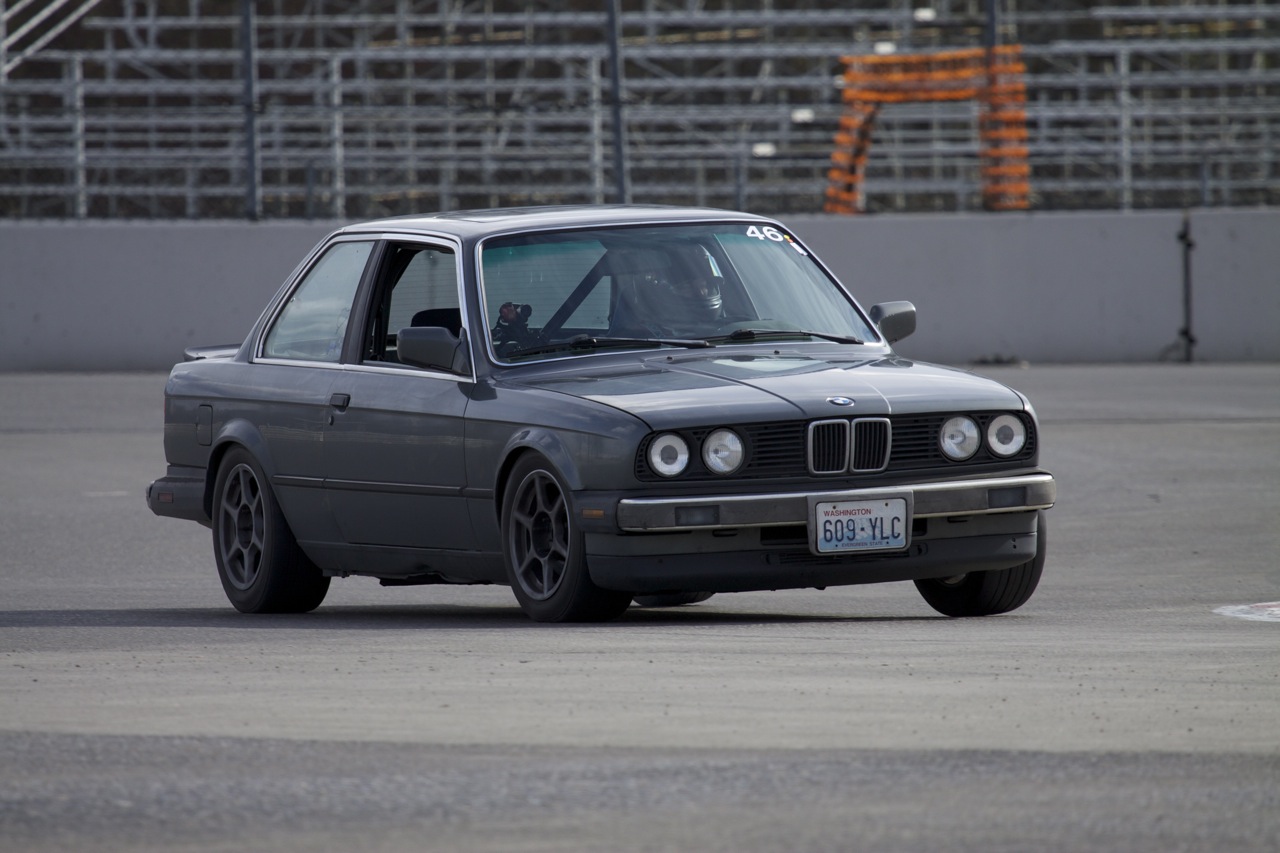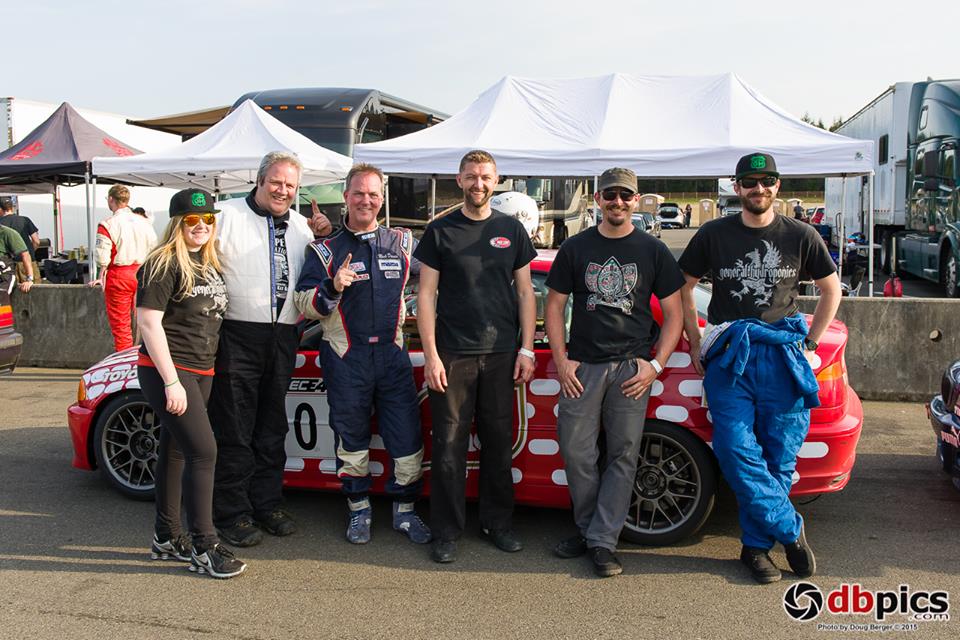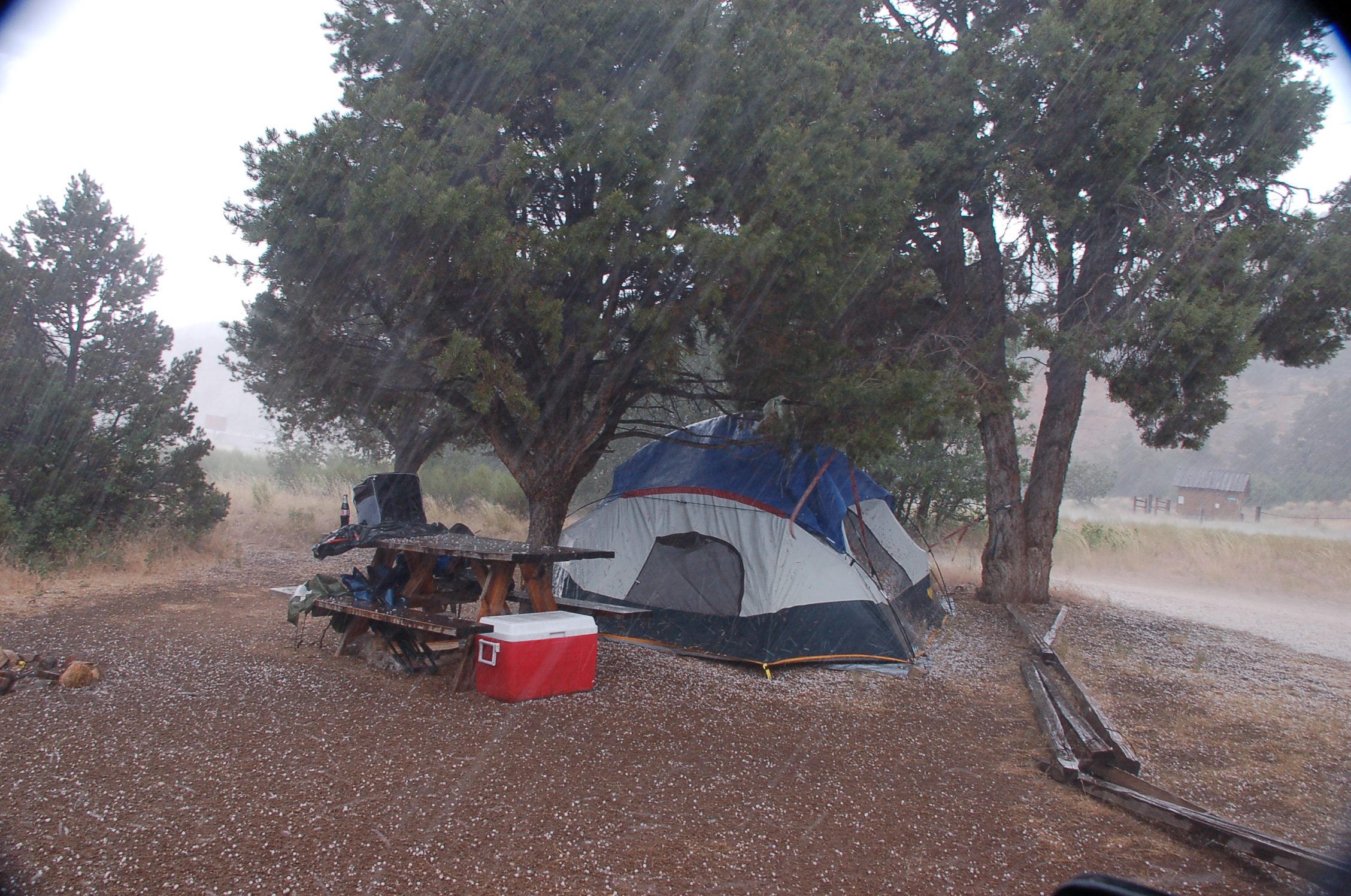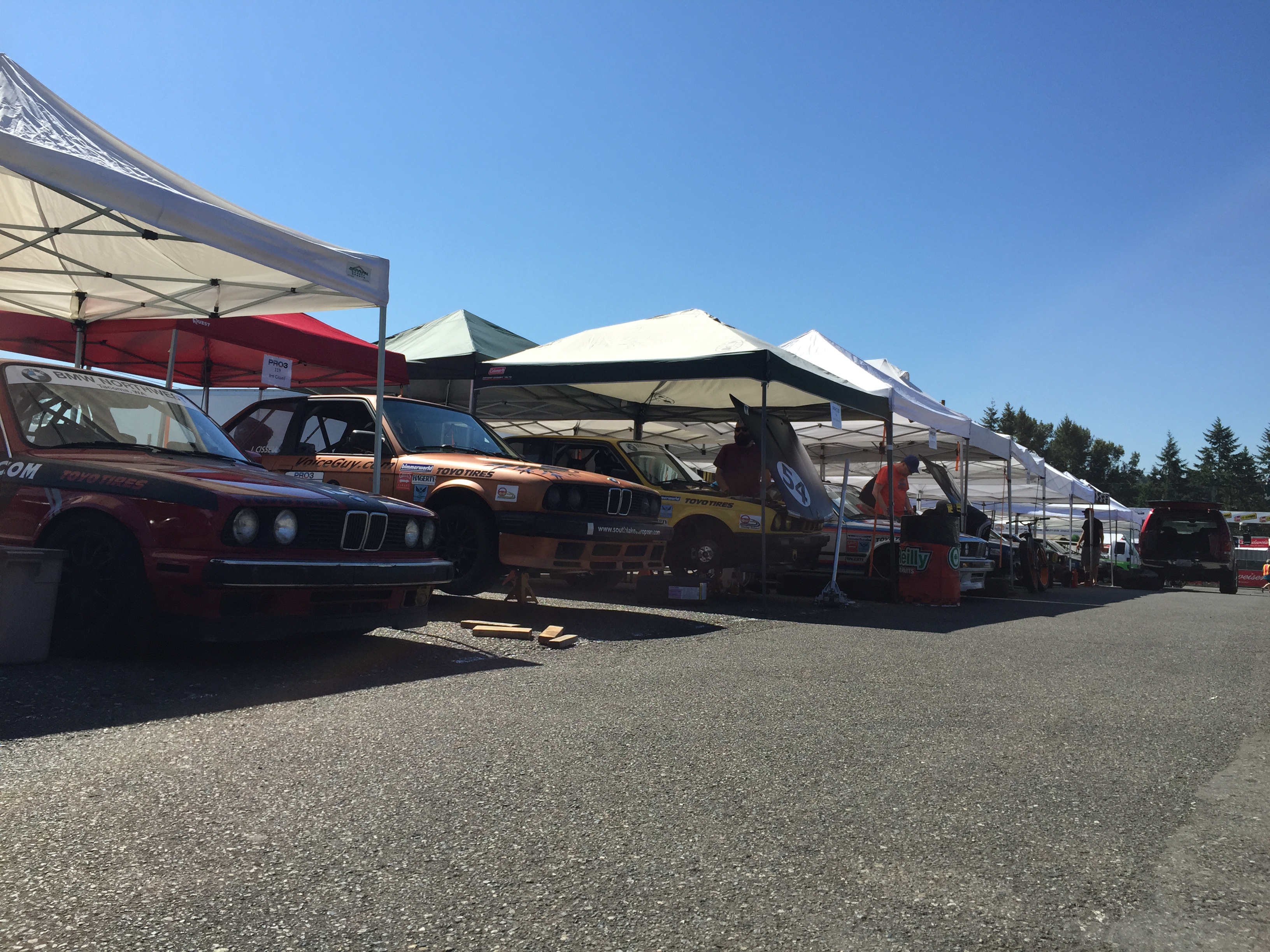 What: Building a track car – things to consider and make sure you do when building your dream car for the track.
What: Building a track car – things to consider and make sure you do when building your dream car for the track.
If I knew then what I know now: Power is almost always the last thing to focus on. Most modern cars are plenty powerful enough.
Check out: These are some of the best bang for the buck items for your track day car:
- Performance Friction Brake Pads
– several models for nearly every application
- Eibach Sport and Racing Spring Kits
: Solid springs for street and track duties
- Momo 1073BLK Racing Seat
: Super seat, great price and I’ve been rocking this for years in my street/track E30 (with a roll bar).
So you want to go to the track and don’t have a car yet, but you want something of your own. Cool, what to do now? Here are some key variables to consider:
Overall budget
First thing your going to have to decide is how much money you want to put into this car, that you are realistically only going take on track a few times a year. One major thing is, at the track things, can go sideways in a hurry. Always remember on any given day the track may consume the car, hopefully not you as well but we will go over that here in a bit. The main thing again is to have fun right? If your scared of the car your driving, you may not want to build that car into a track car.
It’s better to drive a slow car, fast than to drive a fast car slow.
Something that was said to me early on in driving was “It was better to learn how to drive a slow car fast rather than be the guy that drives a fast car slow”.
Front-Wheel, Rear-Wheel or All-Wheel Drive?
Also what drive-train lay out do you want? A good rule of thumb is you should track something that has a similar layout to the car you drive all the time. This will best translate the things you learn at the track to the street. OK we have thought about the things above and some personal preferences as well, Time to choose a car.

I like to drive a slow car, fast type of a style. Slow is also a relative term. By modern super car standards a car like a 2002 BMW M3 would be slow with 333bhp and 3400lbs. Think of that for a second, a Mclaren P1 has almost 1000bhp. Three times more! WOW. That being said the BMW M3 is one of the most common cars around due to its chassis, motors, and driver feel. Not just M3’s but most 3 series BMW’s are great track cars. Porsche Cayman, 911’s of all years and 944’s also make good lapping cars. Mazda makes a handful of great cars with good driver dynamics in both front and rear wheel drive. Honda’s, Toyota’s, Nissan’s, Lotus’, Ford Mustang, Gt86 cars, the list goes on and on but most (not all) of the car listed above don’t carry a large price premium to acquire.
You got your car, now what?
Once you found a car its time to take a look at it. A track car should not leak, squeak, rattle, hiss, buzz, clunk or shake. Any of these items will need to be addressed before even the first track event. You must have a reliable car to take to the track. Breaking down or oiling down the track doesn’t only ruin your day but all others as well do to lost time from cleanup and decreased track condition.

Lets get it ready to go fast. What are the two most important systems in a car? Steering and braking. At a minimum the entire suspension and brake system should be inspected with a fine tooth comb. Replace any and all worn items. At this time depending on what is worn out an upgrade may get to pop in.
Lapping prep basics has taught me that having a set of track brake pads is the most beneficial item you can do to your car to make it last the entire day. Nothing worse than calling it a day because you used all your brake pad in two session. I would also try to do braided brake lines at this time as well. They just help with the pedal feel when you really get on it hard. I have always had great results with Performance Friction Brakes, Carbotech Brakes, Stoptech brakes, and Wilwood brakes for pads, brake lines rotors, and calipers. I could be happy with this prep level on a car. Driving a car on soft suspension and street tires with killer brakes can be a hoot!

Brakes – check! Shocks and Springs are next!
So you have done a couple days now and the brakes are good but you are gaining a thirst for G force. Whats next? Lets do some shocks and springs. I would suggest going with a coil over setup with a linear rate spring (most good kits are). Having a shock and spring combo that works together as one makes a car become so much more predictable. The build up to the adhesion limit is far less sudden in this case. Sway bars are a common upgrade as well. That being said a good coilover setup (read chassis tuning) may not require them. A lot of times I have put a stiffer sway bar on a car only to place it at full soft or in some cases remove it all together. I would stick with one step at a time on this one. Bushings are a great upgrade as well for chassis stability. Street cars are built to be quite and comfy. These rubber stockers allow some chassis parts to move a lot as to not upset the ride comfort. At the track this movement will cause the car to never feel like it really takes a set, always kinda moving around. In the past we have used Ground Control products, BC Racing products, Fortune Auto products, JRZ shocks, Motion Control Suspension and would not hesitate to use any of them for future projects.

The Meaty Tire Thread!
A set of good track rubber is always fun. A good set of R compound tires can up your grip game by a massive amount. The soft grippy compounds and large tread block size allows the tire to stick to the road once it gets to operating temperature. The tread blocks being as large as possible keeps the tire tread pattern from deforming or getting torn off as they pass there heat tolerance. This can have a side effect that can catch you off guard. The enhanced grip level means your speed is higher and your lateral load is higher and the then sudden loss of traction at the tire limit is much more dramatic than it would be on street tires. Most good tires do give you some warning before they will slide.
There is nothing that beats that grip though. Toyo Tires, Nitto Tires and Hankook Tires make good lasting, high grip, user friendly track tires. There are many others but keeping cost in mind these are what I shop for most of the time. Check out Tire Rack for usually solid deals and good availability.

More Speed Requires More Safety – Don’t Skimp Out on Your Life
Well now the car has better brakes, an upgraded suspension, and we have some nice grippy tires. That means we are moving pretty fast now. One of the thing I have learned in my years going to the track. Safety is NOT over rated. The better the safety gear the better the chance you can walk away from a big one. Good basic safety harnesses do a great job of keeping you planted in the seat at the track. Even a set of four point belts with a stock seat can get you headed in the right direction.
Being able to stay planted in your seat with out having to hold yourself into the car allows you to have smoother, softer inputs that upset the car less in a reaction maneuver. Upgrading the seat to one with deeper sides and some better shoulder support just bring your stability in the car to the next level. A note to remember when shopping for seats. It is not recommended to run a fixed back racing shell without some type of rollover protection. In the case of a rollover a reclining seat is designed to fold/ break in a way to prevent the occupant from being crushed if the roof caves in.
Sorry if this is sounding a little dark but its the real deal. If you were in a rollover with a racing seat the seat would not fold and the roof would make contact and there is a high chance of getting crushed. A roll bar or roll cage is never a bad idea when going fast. I have run a rear roll bar and a race seat for years in my track car. Just having the piece of mind of knowing I have done the best I could with the budget I had, I felt as safe as I could be for the speeds I am driving. I am planning on installing a full cage in my car as the plan for speed increases.
I also run a set of six point harnesses, a Momo head restraint seat, and a Hans device attached to my Arai gp6 helmet. More on helmets later.
Fire is also a possibility. With increased speed comes increased stress and increased heat. There are many combustible fluids in a car: fuel, oil, brake fluid, gear oil, and that is just some fluids. A track car should at minimum have a small fire extinguisher. A complete fire suppression system plumbed into the car is best. They are not that much money in the grand total. Bimmerworld sells a kit for a few hundred dollars. When you have spent now thousands of dollars, it seems like a waste to have is burn to the ground because you didn’t want to spend a little more. Sparco, Momo, OMP, Schroth, Arai, Hans, Alpinestar, Adidas are all brands I would recommend.

How about that. Now we have a sweet track car. The car of our liking, the one that fits you like a glove, the one you have always wanted. It’s all leak free and reliable. It stops on a dime with the sweet brakes, it drive like its on rails with the tuned suspension, it has the grip from the sticky tires, and you have piece of mine being planted in your car with all of your protective gear keeping you safe. Now you can worry about you at the track rather than if the car can handle what your putting it through.

If you noticed I never got into adding power. The things above will make your car much faster than you think. Being able to hold a higher corner speed and have a shorter stopping distance will get you way better lap time results than just tossing horsepower at it. It all needs to work as a balanced package. Once you want to add power after your skills have bounded, a key item to remember is not to add to much. You don’t want to have more power than the car, tires, brakes, ect can handle. Back to the scary car thought. Its always easy to add more power to a car. So I say just roll it in rather than shoot for the moon.

 What: What to wear at the track – literally, everything, including underwear in some cases.
What: What to wear at the track – literally, everything, including underwear in some cases.









 What: For those multi-day track weekends and trips, you don’t need an expensive hotel or RV. Just camp at the track, even in the winter and fall.
What: For those multi-day track weekends and trips, you don’t need an expensive hotel or RV. Just camp at the track, even in the winter and fall.














